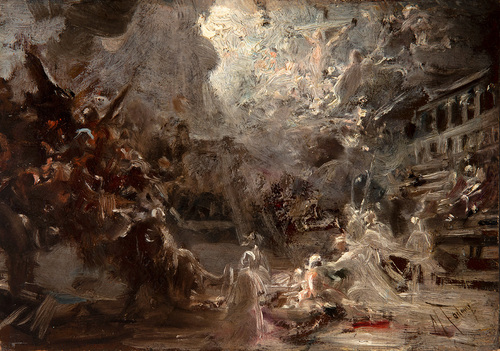Mariano Fortuny: A talent that was ahead of his time
Since Goya there has not been a Spanish painter with greater international projection than the one achieved by Mariano Fortuny in his short career. Within a generation of extraordinary painters who raised Spanish art of the 19th century to its maximum power, Fortuny led an absolute renewal of the plastic arts that marked not only his closest friends but also a whole generation of European painters.
After showing a precocious fondness for the arts, the young Fortuny began his academic training at the La Llotja school where he won the scholarship that would take him to Rome for the first time in 1858. In the Italian capital, Fortuny developed a fundamental part of his career that would deeply mark his personality and artistic projection . In this sense, the multiple trips that Fortuny made throughout his life, supposed a constant evolution in his painting, managing to abstract from them a learning that, with an extraordinary instinct, led him towards a completely innovative plastic conception, promoting his painting beyond academic conventions.
The residue of the multiple influences that he absorbed as a result of his travels is reflected in this mature work produced during one of his intermittent stays in Rome. As a sketch for a painting set in the Coliseum, “Allegory to Christianity” exemplifies the supreme freedom of stroke and compositional ingenuity with which the anecdotal nature of his early production gave way to a painting of powerful plasticity. Already freed from any hint of academic conventionalism, after his determining time in Morocco, Fortuny will give free rein to a highly expressive painting that opens his schemes to the gestural force of some brushstrokes, which, with minimal representative restraints, merge into an exercise of light and color virtuosity . In this case, his ability to create chiaroscuro effects using light and color as elements that weave the composition together, in a scene as dramatic as it is hypnotic that reinterprets, in a modern key, humanity’s eternal struggle between good and evil. .
Likewise, the profound knowledge of ancient painting that he acquired in Rome and on his visits to the Prado Museum, shines through here both on a thematic and aesthetic level. The scene confronts the presence of the dark spirits on the left with the angels and saints on the right, who together with Jesus Christ represented in his ascension to heaven allude to the theme of passion, death and resurrection. In this aspect, Fortuny uses the typically baroque resource of breaking Glory to divide the spiritual plane from the earthly, represented through a sky whose clouds part to give way, through a dazzling luminosity, to the celestial figure. The vanishing points, converging diagonals and foreshortenings commonly used in this type of representation reinforce here the dynamism and swirling movement of the composition in a spectral vision whose drama and mystery completely envelop the viewer.
His works, whether they were the most meticulous or the freest and sketchiest that we find here, represent an exercise in pure painting, in whose technique and vision present, past and future times converge. Despite his premature death, Fortuny enjoyed great prestige among international collectors and dealers who, like Adolphe Goupil, made him a true myth, whose true artistic dimension was cut short too soon.






